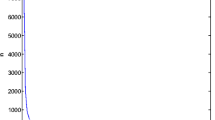Abstract
Together with bit commitment, Oblivious Transfer is a very useful cryptographic primitive with important applications, most notably in secure multiparty computations. It has been long known that secure Quantum Oblivious Transfer can be achieved from a secure implementation of Quantum Bit Commitment. Unfortunately, it is also well known that unconditionally secure Quantum Bit Commitment is impossible, so building a secure Oblivious Transfer protocol on top of Quantum Bit Commitment is ruled out. In this paper, we propose a relatively simple quantum protocol for Oblivious Transfer which does not require qubit storage, does not rely on bit commitment as a primitive and is easily implementable with current technology, if the two actors are honest. The protocol is proven to be secure against any individual measurements and entanglement-based attacks. Any cheating attempt trying to speculate collective measurements would be considerably difficult to put in practice, even in the near future. Furthermore, the number of qubits used in our scheme (embodied as photons in a physical realization of the protocol) acts as a security parameter, making it increasingly hard to cheat.



Similar content being viewed by others
References
Crépeau, C.: Equivalence between two flavours of oblivious transfer. In: Advances in Cryptology—Proceedings of CRYPTO ’87. pp. 350–354. LNCS, Springer (1988)
Crépeau, C., Kilian, J.: Achieving oblivious transfer using weakened security assumptions. In: Proceedings of the 29th Annual IEEE Symposium on Foundations of Computer Science. pp. 42–52. IEEE press (1988)
Damgård, I.B., Fehr, S., Salvail, L., Schaffner, C.: Cryptography in the bounded quantum-storage model. In: 46th Annual IEEE Symposium on foundations of Computer Science (FOCS). pp. 449–458. IEEE Computer Society (2005)
Even, S., Goldreich, O., Lempel, A.: A randomized protocol for signing contracts. Commun. ACM 28(6), 637–647 (1985)
Kilian, J.: Founding crytpography on oblivious transfer. In: Proceedings of the Twentieth Annual ACM Symposium on Theory of Computing. pp. 20–31. STOC ’88, ACM, New York, NY, USA, http://doi.acm.org/10.1145/62212.62215 (1988)
Li, Y.B., Wen, Q.Y., Qin, S.J., Guo, F.Z., Sun, Y.: Practical quantum all-or-nothing oblivious transfer protocol. Quantum Inf. Process. 13, 131–139 (2014)
Mayers, D.: Unconditionally secure quantum bit commitment is impossible. Phys. Rev. Lett. 78, 3414–3417 (1997)
Mayers, D., Salvail, L.: Quantum oblivious transfer is secure against all individual measurements. In: Proceedings of the Third Workshop on Physics and Computation – PhysComp ’94. pp. 69–77. IEEE Computer Society Press, Dallas (1994)
Rabin, M.O.: How to exchange secrets by oblivious transfer. Technical Report TR-81, Aiken Computation Laboratory, Harvard University (1981)
Wiesner, S.: Conjugate coding. SIGACT News 15, 78–88 (1983)
Yang, L.: Quantum oblivious transfer and bit commitment protocols based on two non-orthogonal states coding. e-print arXiv:1306.5863v5 (2015)
Yao, A.C.C.: Security of quantum protocols against coherent measurements. In: Proceedings of 26th Annual ACM Symposium on the Theory of Computing. pp. 67–75 (1995)
Author information
Authors and Affiliations
Corresponding author
Rights and permissions
About this article
Cite this article
Nagy, M., Nagy, N. Quantum Oblivious Transfer: a secure practical implementation. Quantum Inf Process 15, 5037–5050 (2016). https://doi.org/10.1007/s11128-016-1438-1
Received:
Accepted:
Published:
Issue Date:
DOI: https://doi.org/10.1007/s11128-016-1438-1




